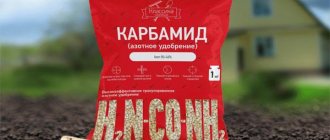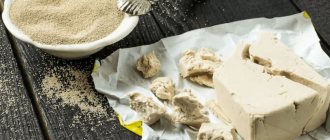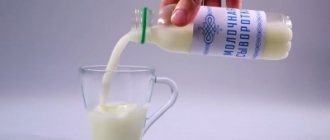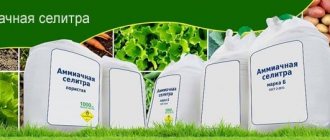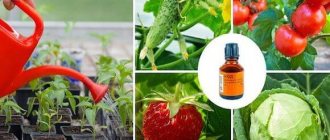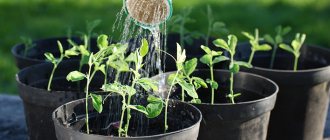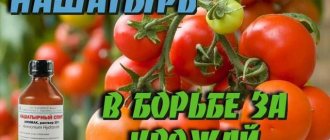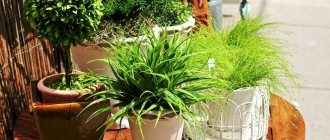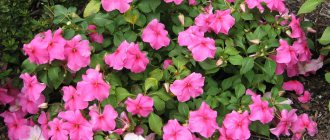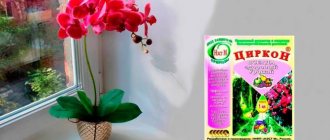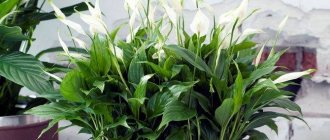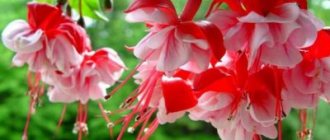Yulka
That is Fungus gnats
Once you improve your care, eliminate errors when watering, potassium permanganate is not needed.
Weak pink solution. You can also try a weak solution of planed laundry soap.
The seeds are soaked for 20 minutes in a 0.5% solution of potassium permanganate (0.5 g per 100 ml of water). Before planting the seeds of any vegetables or flowers, water the soil in the box with a special solution: 3-5 g of potassium permanganate per 10 liters of water. This will protect the seedlings of tomatoes, eggplant, peppers, cabbage from the “black leg”.
I wish you good luck!!!with caution. For example, you should not use eggshells for plants that prefer acidic soil, and coffee grounds for those that grow in alkaline soil.
10. Egg shells. Suitable for all plants, except those that prefer acidic soil (azalea, camellia, indoor hydrangea). To feed plants, an infusion is prepared once a month: eggshells crushed in a coffee grinder are poured with water and infused for 12-15 days in a dark place.
Herbal infusion for feeding plants without odor
This safe, natural fertilizer has one drawback: it smells very unpleasant. Moreover, if you still work with it without gloves, the smell remains on your hands for quite a long time. This problem can be solved by adding EM preparations (effective microorganisms) at the beginning of preparing the infusion. These can be ready-made, which can be bought in a store: Baikal, Siyanie, Vozrozhdenie, Gumate EM, Fitosporin.
Or you can use what everyone has on the farm. For example, sugar, honey or old jam. You can add an infusion of regular rice.
Pour ¼ cup of rice into 1 cup of water, stir thoroughly until the water turns whitish. Afterwards, pour the water into a separate cup and leave in a warm, dark place for about a week. Afterwards, the solution is filtered, milk is added in a ratio of 1:10 and again left to infuse for a week. After a week, the curd mass will separate from the whey; it must be separated. And add 1 tbsp to the whey. l. Sahara. And the EM drug is ready.
All EM preparations help to prepare fertilizer faster, and during its preparation there will be no unpleasant foul odor. On the contrary, it will be pleasant and reminiscent of the smell of kvass. In addition, these funds will then help restore beneficial microflora in the soil, its fertility, and increase the number of earthworms.
Using EM preparations in the preparation of herbal infusion, it is enough to add 70-100 ml of the working solution to all other components in a 10-liter bucket. Then stir, tightly close the container with a lid or thick film. Leave in a shaded place for 3-4 days.
Iodine
Iodine plays an important role in the processes in the body of humans and animals; the lack of this element greatly affects health. As for plants, iodine does not require special addition in fertilizing. Plants are able to capture iodine from the atmosphere; it is often found as impurities in fertilizers, and peat, which is the basis of most soils for indoor plants, contains it in significant quantities.
Plants clearly do not respond to iodine deficiency. However, the literature provides examples of its beneficial effect on some agricultural crops, but there is no exact explanation for this phenomenon yet. Plants are able to accumulate iodine in their tissues, which is very valuable when growing forage crops and vegetables, but for growing indoor plants that are not consumed as food, this ability is not important.
The stimulating effect of iodine on plants is noted at its content of 0.1 mg/kg in the nutrient solution. But already at a concentration of 0.5-1.0 mg/kg a toxic effect is observed. Thus, adding a large amount of brown algae ash to the soil causes iodine poisoning, which manifests itself in marginal chlorosis of adult leaves and dark green coloring of young leaves.
When using any substances while growing potted plants, it is extremely important to remember that the volume of soil is small, any careless application or exceeding the dose can have a detrimental effect on the plants.
When adding one drop of pharmaceutical iodine per liter of water, the iodine concentration will be approximately 1-2 mg/kg, which is 10 times higher than the stimulating concentration and turns it into a poisonous one. For a stimulating effect, it is enough to add a drop to a bucket of water, but such a volume is too large for house plants.
For open ground plants, a dosage of 1 drop per 3 liters of water is often recommended for watering and spraying against fungal diseases, which is closer to the norm; moreover, the volume of soil in the garden is much larger. Do not exceed at least this concentration, first test it on a small part of the plants, consider these treatments against diseases as preventative, and at the first signs of fungal diseases, use agrotechnical measures and fungicides to preserve the harvest.
We invite you to find out what plants grow in the meadow
How to use as a disinfectant
Potassium permanganate is used in this case as a solution:
- seed material and tubers are disinfected;
- inventory tools for gardening are processed;
- adding the solution to the soil layer before planting;
- treatment for preventive purposes in greenhouses and hotbeds.
Note to the gardener. The working solution is prepared at the rate of 0.5 grams of potassium permanganate per 100 ml of water. The soaking time for seeds and tubers should not exceed more than half an hour. Increasing the period leads to the fact that the seed material may suffer from burns and lose its suitability.
It is enough to wipe the garden tools using a concentrated solution of potassium permanganate. You can also simply leave the tools in it for 60 minutes.
For pre-sowing soil treatment, a working manganese solution is also used at the rate of 0.5 grams of the drug per liter of warm water, whose temperature must be at least 60 degrees.
In greenhouses and greenhouses, you can spray or simply wipe with a rag. For greater effect, take a strong solution that has a dark pink color. Potassium permanganate is widely used for preventive treatment of containers used for planting seedlings.
Treatment of seedlings with vodka
Even with proper preparation of the soil for seedlings, there is a risk of infection with fungal diseases, since spores can be introduced with purchased soil. Young tomatoes are most often affected by the black leg at the bottom of the stem. If signs of disease are noticed on one sprout, the entire batch requires urgent treatment.
Procedure:
- Dilute 1 tablespoon of vodka in 1 liter of warm water.
- Water the seedlings at the root once.
The method prevents the development of the disease and serves as an additional impetus for growth and strengthening of the immune system. To protect the seedlings already at the stage of emergence on the surface, they are sprayed with moonshine or vodka diluted with water in a ratio of one to ten. The method is effective for seedlings of cabbage, asters and nasturtiums.
How to dilute the product
In various areas it is necessary to use solutions of potassium permanganate of different concentrations:
- For spraying, use a very weak solution - almost transparent with a slight pale pink tint. To obtain it, dissolve 1 g of crystals in 5 liters of water.
- To feed indoor plants, a solution of a more saturated light pink color is used, which is achieved by dissolving 1.5 g of potassium permanganate in 5 liters of water.
- To disinfect soil in pots, prepare a more saturated solution: 0.5 g of product per 1 liter of water.
- To soak the seeds, 1 g of the drug is dissolved in 500 ml of water.
To get the desired effect from use, you should take a fresh ready-made solution, which has been stored for no more than 3 or 4 days.
Precautionary measures
The manganese solution contains a high concentration of active components, so when using it it is necessary to protect the skin and mucous membranes.
If the product gets on the skin surface, wash the affected area under running water and soap.
When processing plants, it is important to follow the dosage so as not to harm the leaves, shoots and root system.
During application, you should protect yourself with rubber gloves and wear protective clothing to protect exposed areas of the body from accidental contact with the solution.
How I grow potassium permanganate for flowers
Stock and weak solution of potassium permanganate
I don’t have a lot of indoor flowers, therefore, a small volume of solution is needed to water them. Two liters will be enough. First of all, I prepare the mother liquor in a transparent glass, without particularly worrying about the level of its concentration. To do this, I pour warm water into the container. Then I soak the edge of a toothpick in it and dip it into a bottle of potassium permanganate.
I stir the stuck particles in a container with warm water. I stir until the crystals disappear completely. It is very important for flower growers to make sure that the potassium permanganate crystals are completely dissolved, because when undissolved elements get on the foliage of plants when watering or spraying, it will lead to chemical burns.
Then I mix the mother solution with settled water in parts in a watering container, achieving the required concentration.
This is much easier for me than trying to figure out the required number of KMnO4 crystals in a watering container right away. As luck would have it, I either grab a few of them, the solution is pale, or a lot at once, until it’s deep pink.
For those who are confident in themselves. Dilution of potassium permanganate must be done in a transparent glass container; it is convenient to control the quality of the solution in it. Pour warm water into the container to speed up the dilution. I advise you not to pour water to the edges of the dishes, it will be more convenient to mix, and by adding water you can always adjust the level of concentration of the solution.
We invite you to familiarize yourself with Voronets spicata - Voronets
Add potassium permanganate crystals to the water. For these purposes, use a moistened toothpick or a thin stick. Mix the solution thoroughly until the crystals are completely dissolved; even a small amount remaining can subsequently dramatically change the concentration of the solution and lead to chemical burns.
Add potassium permanganate crystals or water until the required concentration is obtained.
A weak solution of potassium permanganate, pale pink
Medium pink potassium permanganate solution
A strong solution of potassium permanganate the color of red wine
Potassium permanganate for plants: use in the garden, vegetable garden, for indoor crops
In order not to once again flood plants whose fruits are used for your own needs with chemicals, you can use potassium permanganate or potassium permanganate, sold in a pharmacy.
The solution is strong enough to eliminate fungal spores from growers' tools, or greenhouse interiors, or even in the soil. This substance is used at all stages of excavation work - from soaking the seeds to the moment of harvesting and after it - in the fall.
Potassium permanganate for plants is both a medicine, a fertilizer, and an antiseptic. But it must be applied based on the task at hand. The strength of the solution for seeds and for wiping tools will be different - if you mix up the concentrations, the plants will get foliage burns.
Potassium permanganate for parasites and pests
It is believed that a solution of potassium permanganate not only disinfects and disinfects, but also helps in the fight against insect pests. There is a deal of truth in it.
My experience shows that potassium permanganate can be used in combination with other pest control agents, but do not rely on it alone, since potassium permanganate is not a poison for most insect pests.
Potassium permanganate alone will not help you cope with insect pests.
Will potassium permanganate help against midges? No - you cannot remove flying insects from your plant using potassium permanganate alone. Use special insecticides for this. To combat insect pests, I advise you to use ready-made preparations Fufanon and Actellik.
Marina Turilina
No! These are for flowers as vitamins are for people. Plivate is a must.The potassium permanganate solution is prepared in the following proportion: 3 grams per 10 liters of water. If you soak the seeds in a solution of potassium permanganate before sowing, this will not only disinfect them and destroy pathogens, but also provide a starting supply of manganese (which promotes plant growth).
As a result, you can get rich and environmentally friendly products.homemade fertilizers for indoor flowers9. Banana skins. You can dry them, grind them in a coffee grinder and add a teaspoon per glass of clean water during weekly watering. It is good to add crushed banana powder to the soil when replanting plants.
We invite you to familiarize yourself with Tulips at home in a vase
Or you can infuse fresh banana peels in a liter of water for 24 hours, and also use this water as a potassium and nutritional supplement. It is quite possible to feed your green indoor friends with homemade nutrient mixtures. Let's talk about what kind of powder you're using in vain, it's better to dilute the garlic in water on a grater and add it. It's possible, but it's better to use a special remedy for midges. There's also Fitoverm, it's less toxic and very weak.
Acceleration of maturation
A study of the effect of ethanol on the ripening of tomatoes was carried out back in 1934 by Soviet botanists S.V. Soldatenkov and M.G. Kubli. During the experiment, alcohol solution in various concentrations was injected into unripe fruits during their growth and the results were observed.
As a result, scientists were able to speed up the process by 8-16 days, and the processed tomatoes tasted no different from regular ones. Subsequently, M. G. Kubli continued his experiments and two years later even published a fundamental work on this topic, but the experiments did not receive practical application.
Accelerated ripening after spraying with alcohol-containing solutions is explained by the fact that ethanol, under the influence of enzymes, releases ethylene, a powerful growth stimulant. This volatile gas in low concentrations activates the formation of the root system, promotes flowering, and accelerates the ripening of fruits. In nature, plants synthesize ethylene naturally, and scientists classify it as one of the types of phytohormones.
The recipe for fertilizer with potassium permanganate is as follows:
- boric acid 1/3 teaspoon
- potassium permanganate on the tip of a toothpick
- 3-5 drops of iodine
- 3 liters of water
Boric acid must be dissolved separately in warm water (40-45 degrees), until the crystals are completely dissolved. Also dissolve potassium permanganate in a prepared container in 3 liters of water until a pale pink color is obtained. Then add 3-5 drops of iodine. Lastly, add dissolved boric acid. With this solution it is necessary to carry out both root and extra-root feeding of domestic plants.
Important! Fertilizing should only be done on watered plants; it is not recommended to apply fertilizing to dry soil.
A solution of potassium permanganate allows you to compensate for the lack of microelements such as potassium and magnesium. In addition, it has a beneficial effect on fruiting indoor plants, such as pomegranate, persimmon, citrus fruits (lemon or orange). But an excess of microelements can lead to undesirable consequences. Therefore, do not abuse this substance.
Special cases
It is worth watering the seedlings with a solution of potassium permanganate a day or two before picking. This procedure is probably familiar to experienced gardeners. Many crops are sown in small containers with holes at the bottom to drain excess water.
It is easier to ensure good drainage, drainage of excess fluid and better oxygen supply. But as the seedlings grow, it becomes crowded. Therefore, when several true leaves appear, it is time to transplant the plants into individual containers.
Thanks to this, it is possible to avoid intertwining of roots, as a result of which the seedlings grow weak, and in the future it is difficult to separate them for moving into open ground.
In addition, in this way it will be possible to select the best and healthiest seedlings if there were many seedlings. New soil must be disinfected, just like the first time. And treating the seedlings before starting work will prevent the transfer of any bacteria.
Yulia Vdovichenko
And what was swarming in your friend’s pot is called FUCKERS.14. Water after washing cereals (barley, buckwheat, rice, peas, millet). Such watering will saturate the soil with nutrients.3. Aspirin. One tablet per liter of water at room temperature, and the solution for spraying leaves and flowers is ready.
This treatment increases the immunity of all plants. I don’t know about insecticides... judging by the name, they kill insects, not arachnids :) Midges - change the soil... You can reduce everything proportionally by 2,5,10 times - depending on how much solution you need.And what do you want to treat the plants for?
But...to avoid pests and plant diseases, by the way, spraying and fertilizing, and also not bad in the fight against plant diseases - it copes. As for the negative effect of potassium permanganate... You see, in your case it is of NO use. But too much watering with potassium permanganate means excess moisture.
And small insects hatch and breed in large numbers precisely in conditions of high humidity and damp soil. So in this sense, potassium permanganate will be somewhat harmful. To disinfect the soil in greenhouses, it is recommended to pour up to a liter of a solution prepared from 2 g of potassium permanganate and 10 liters of water into the holes intended for planting seedlings of tomatoes, cucumbers and other crops.
The acidic reaction of the soil (at a pH below 6.0) favors the absorption of Mn2 by plants; a slightly alkaline reaction (pH above 7.5) stimulates the formation of Mn(OH)2 hydrate, which is difficult for plants to absorb. Fungus gnats
